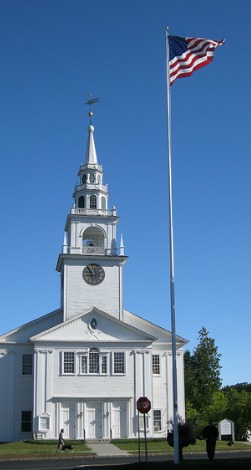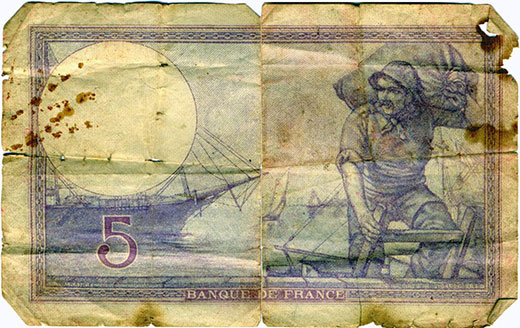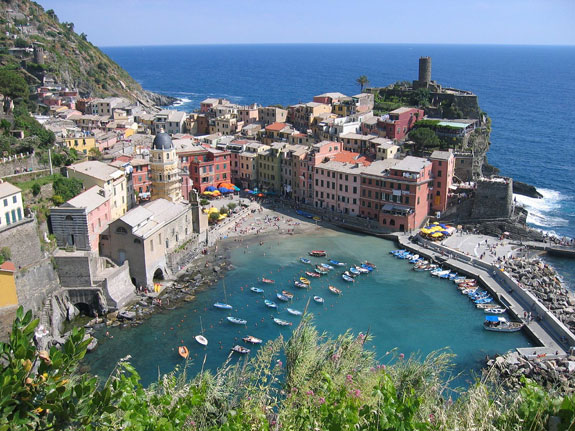
April 26, 2012
All Aboard the Beijing-Lhasa Express
![]()
In 2006 when the People’s Republic of China started railroad service from Beijing to the Tibetan capital of Lhasa—a 2,525-mile route cresting at 16,640-foot Tanggula Pass—people like me got in line. Though critics have seen it as yet another means for China to despoil Tibet’s cultural and mineral riches, I was studying Mandarin in Beijing and I couldn’t pass up the chance to take the railroad trip of a lifetime. I did think about waiting because I’d heard there were plans for a luxury version of the train, managed by Kempinski Hotels, with private-bath suites, elegant dining cars and window-lined lounges.
Then spring break came around and I couldn’t wait any longer. I flew to Lhasa and got a train ticket back to Beijing in a four-berth soft sleeper; it had pressed cotton sheets, pillows, comforters, TV monitors with headsets and oxygen canisters for victims of altitude sickness. All quite congenial at first. But it’s a 40-hour trip, so conditions deteriorated along the way (especially in the restrooms). At mealtime, passengers filed into the dining car for unappetizing food or bought noodles on the platform during brief stops.
I’d have been miserable, but every time I found myself wishing for a cup of coffee or a hot bath, all I had to do to raise my spirits was press my nose to the window. The first day we crossed the Tibetan Plateau, which looks like Utah with Alaska on top. Nameless ranges of snowcapped peaks passed by; fur-clad villagers stared at railroad crossings and yaks bolted off the tracks. The Chinese government spent millions to cross the plateau by rail, piping liquid nitrogen through the tracks to keep them from buckling during a thaw and building underpasses for wildlife.
I fell asleep after a 30-minute stop in the lonely mining town of Golmud, then woke the next morning in the heart of the Middle Kingdom, decorated with sunshine and cherry blossoms. I remember passing through Xi’an, home of the terra-cotta warriors, before tucking in the second night, followed by wake-up the next morning at Beijing’s West Station.
In retrospect, I’m glad I made the trip when I did because the 5-star Beijing-Lhasa train is on what looks like permanent hold. Fifty percent owned by the flush Chinese electronic company Huawei, it’s still being touted. But Kempinski has bowed out and the perhaps too fast-and-furiously growing Chinese railway system has suffered setbacks: to wit, an accident last July on a new high-speed line in eastern China that killed 43 people and the imprisonment of the nation’s railway minister, suspected of graft.
So don’t wait for amenities on the railroad that crosses the Middle Kingdom to the Tibetan Plateau. Question your soul about the political correctness of taking a PRC train to embattled Tibet. And then, if you ask me, go.
April 20, 2012
Long Live America’s Small Towns
![]() When my editor at Smithsonian asked me to write a story about “The 10 Best Small Towns in America” for the magazine’s May issue, I didn’t expect an outpouring of responses: Facebook “Likes” and “Tweets” in the tens of thousands along with hundreds of very thoughtful e-mail comments, many of them from people happy to see their hometowns included. I also didn’t expect my research—hugely aided by Esri, a California-based geographic information systems company—to uncover towns of such widely differing character.
When my editor at Smithsonian asked me to write a story about “The 10 Best Small Towns in America” for the magazine’s May issue, I didn’t expect an outpouring of responses: Facebook “Likes” and “Tweets” in the tens of thousands along with hundreds of very thoughtful e-mail comments, many of them from people happy to see their hometowns included. I also didn’t expect my research—hugely aided by Esri, a California-based geographic information systems company—to uncover towns of such widely differing character.
Small town meant just one thing to me: “Our Town,” the place described in Thornton Wilder’s classic American play as Grover’s Corners, New Hampshire. Remember how it begins with the Stage Manager pointing out its main street, drugstore, hitching posts and Congregational church? Later in Act I, the editor of the local newspaper makes his own assessment: Very ordinary town, if you ask me. Little better behaved than most. Probably a lot duller. But our young people seem to like it well enough: 90 percent of ’em graduating from high school settle down right here to live—even when they’ve been away to college.
There’s also an old James Taylor song I think of: “Letter in the Mail,” about what’s happened to small towns in the American hinterland as jobs dry up and people leave them.
I guess it never was much to look at
Just a one-horse town
The kind of place young people want to leave today
Store fronts pretty much boarded-up
Main Street pretty much closed-down
So, for me, it was an eye-opening pleasure to find that lots of small towns are thriving in ways unpredicted by the old model. Great Barrington, Massachusetts, for example, which claimed the top spot on our list, still evokes Grover’s Corners, with its white-steepled churches and doughnut bakeries. But you don’t have to live there to see that the town has changed, welcoming new immigrant groups and coming up with schemes like minting its own local currency to keep it vital.
My visit to Naples, Florida, another Smithsonian small town, underscored the way economy drives culture. As a second-home enclave for retired CEOs, it has the revenue to support a world-class symphony orchestra, art museum and theaters. With cultural institutions like those, no one has to sit home at night watching reality TV.
Gig Harbor, Washington, a working fishing village on the west edge of Puget Sound, was another story, perhaps the least reconstituted town on the list, which is actually its best feature. But with outlanders discovering its charms—a picture-perfect harbor and still relatively affordable waterfront property, not to mention very fresh fish—the town finds itself in a precarious place. Its effort to strike a balance between letting development in and staying the same requires thinking outside the box, protecting a traditional, low-tech industry that could die out as more lucrative enterprises come in.
In the end, writing the story showed me that every little town has its own distinctions, and challenges. No two are the same and there’s no single prescription for survival. I still dream about Grover’s Corners and can list any number of New England towns that recall it: bucolically beautiful Cornwall Bridge on the Housatonic River in the northwest corner of Connecticut; Cohasset, Massachusetts, just south of Boston; Hancock, New Hampshire, incorporated in 1779.
But in each case, if you look beyond the pretty picture, you find a tangle of small-town dynamics: conservation versus economic development, income inequality, environmental protection, public fund allotment—all driven by people with different agendas, intent on writing the continuing story of the place where they live.
I’m a city girl by nature, apt to romanticize dots on the maps with names like Menomonie and Siloam Springs—long may they live, all of them “Our Town.”
April 19, 2012
Plus Ça Change in France
![]()
In the run-up to the April 22 French presidential election Nicolas Sarkozy has been promising a referendum to loosen labor policies he blames for the high unemployment rate in France. The goal is to emulate Germany, an idea that once would have seemed incroyable in a country where worker protections are as sacred as wine with dinner.
But people who love all things French—including the millions of travelers who continue to make France the number one tourist destination in the world—might be interested to note this trio of developments suggesting that change is on the horizon:
A few months ago, on February 7 to be exact, the franc officially went out of circulation. Introduced by French monarch Jean le Bon (1319-1364), it remained the coin of the realm—with occasional modifications, like the addition of the Vichy seal during the World War II German occupation—until 2002 when France adopted the (now distressed) euro. At that time a ten-year grace period went into effect so that people who stashed old bills under the mattress could exchange them for euros at a locked-in value of 6.56 francs for 1 euro, the going rate when France joined the European Union in 1999. But now hoarders and travelers who accumulated francs left over from past trips are stuck with them. Remember Antoine de Saint Exupéry and “The Little Prince” on the old 50-franc bill? Think of it as a souvenir.
The French honorific mademoiselle went the way of the franc last month when government offices were instructed to remove it from official documents because of sexist overtones inherent in a form of address based on marital status. With the single female distinction excised, only two choices remain: monsieur and madame. Whether common parlance comes to reflect mademoiselle’s demise is another question, not least because it’s sometimes used as a form of flattery for older women.
Yves Jégo, the mayor of Montereau-Fault-Yonne, a small town about 50 miles southeast of Paris, is attempting to raise $255 million to construct a theme park based on the life and times of Napoleon. If his dream becomes a reality, Napoleonland will break ground in 2014 and go head-to-head with nearby Disneyland Paris, which opened in 1992 to cries of sacré bleu from cultural purists but has since become Europe‘s top tourist site, visited by 15.6 million people last year. Given “Boney’s” stature and the pressing need for jobs in France, Napoleonland may get a warmer welcome, though it’s hard to imagine the attractions. The 100 Days in miniature? A Battle of the Nile son et lumière? The Bonaparte family on parade?
Honestly, the more things change in France, the more they really change.
April 11, 2012
Springtime Comes to the Flood-Damaged Cinque Terre
![]()
Italian President Giorgio Napolitano’s recent visit to Vernazza—one of five villages along Liguria’s fabled Cinque Terre coast—signaled a comeback for a region devastated by flooding and mudslides last fall. On October 25, 2011, the delicate and precious little Cinque Terre, strung along approximately ten miles of heavenly Italian littoral between the towns of La Spezia and Levanto, received a pounding 20 inches of rain that turned streets into raging rivers, filled homes and businesses with debris, swept away mudslide barriers and obliterated sections of the beloved coastal path that connects the hamlets of Monterosso al Mare, Vernazza, Corniglia, Manarola and Riomaggiore. In Vernazza, three people died and the village was temporarily evacuated. After the disaster it seemed unlikely that spring and the visitors it brings would ever return to the Cinque Terre.
But spring has come, along with crimson poppies on the shoulders of the Via dell’Amore path. Vineyards that cling to steep cliffs overlooking the Ligurian Sea are greening, promising a fine fall harvest of the grapes used in the region‘s sweet, golden Sciacchetrà wine. Olive trees are unfolding, ready for their annual pruning. Work to rebuild the damaged villages and erect protective mudslide barriers continues, but many townspeople have moved back into their homes and businesses have rushed to reopen for the spring tourist season.
One of the happiest chapters in the story of Cinque Terre’s renewal is the effort made by three American women—Ruth Manfred, Michele Lilley and Michele Sherman—longtime Vernazza residents, to get the news out about the disaster and raise funds for relief. Shortly after the floods, they launched Save Vernazza ONLUS, a not-for-profit organization that has received almost $200,000 in donations to be used for rebuilding Vernazza’s historic center, restoring the scenic trail system and replacing the dry stone walls that are an integral feature of the landscape. Beyond rebuilding, the hope is to promote sustainable tourism in the heavily visited Cinque Terre. “We are making Vernazza more beautiful than before,” Mayor Vincenzo Resasco said, though I don’t know how that could ever be so.
Starting from Montorosso, I walked the via dell’Amore 20 years ago, before the Cinque Terre became an Italian national park and Unesco World Heritage site. It was early spring and I had the whole coast to myself, it seemed. Near Vernazza I climbed onto a boulder just above the sea to work on my tan, then lunched in Corniglia, filling my canteen with leftover wine to take me on to Riomaggiore. That day exists in my memory like one of those old colorized photos that give the places they depict an air of fragile permanence. Let’s hope that, come wind and rain, that air persists in the Cinque Terre.
April 6, 2012
Good Friday Festivities on Procida
![]() Procida is less well-known than Capri and other islands in the glorious Bay of Naples, chiefly favored by Italians, a scant 30-minute ferry ride from the mainland and barely a half square mile in size. On Easter weekend, though, the ferries are full because Procida’s Mysteries of the Dead Christ processional—begun in 1754 as a macabre march of flagellants—is one of the most colorful in Italy.
Procida is less well-known than Capri and other islands in the glorious Bay of Naples, chiefly favored by Italians, a scant 30-minute ferry ride from the mainland and barely a half square mile in size. On Easter weekend, though, the ferries are full because Procida’s Mysteries of the Dead Christ processional—begun in 1754 as a macabre march of flagellants—is one of the most colorful in Italy.
I was there to see it a few years ago and brought back pictures:

The Mysteries of the Dead Christ procession begins at Terra Murata, where early on Good Friday the wagons are prepared, like this one devoted to the Last Supper. Nearby are the medieval fortress of San Michele Arcangelo, the site of a palace built in the 16th century by the Bourbon kings of Naples, and a small museum that displays floats and regalia from the pageant.

A horn-blower announces the start of the procession, which winds along the island’s south coast.

Here is the finished Last Supper float, carried by members of the Brotherhood of the Turchinis, one of the confraternities that traditionally participates in the procession.

Here’s the condemned side of the Last Judgment, one of the more lugubrious wagons. But even this one has a certain homemade sweetness suggesting less the passion of Christ than the passion of the Procida people for their beloved pageant.

Spectators follow the procession through the fishing village of Corricella.

Finally, Christ’s black-lace-covered catafalque comes at the end of the procession, accompanied by a brass band playing a dirge.



























